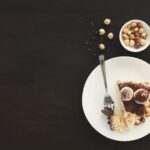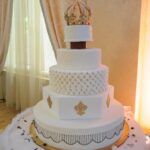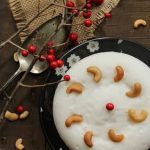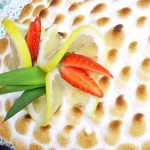Are you looking to learn how to make a flower cake decoration that will impress your guests and elevate any special occasion? Cake decorations play an essential role in making a statement at celebrations, and floral designs are particularly popular for their visual appeal. In this article, we will explore the importance of cake decoration, why flower cake decorations are so well-liked, and provide you with step-by-step instructions on creating your own stunning edible flower cake decorations.
Cake decoration is more than just adding embellishments to a dessert-it’s a way to express creativity and enhance the overall presentation of a cake. Flowers, in particular, have long been associated with celebrations and special occasions, making them a popular choice for cake decorations. Whether it’s a wedding, birthday, or anniversary, flower cake decorations can add an elegant and whimsical touch to any dessert.
Now that you understand the significance of cake decoration and the popularity of floral designs, let’s dive into the details of creating a beautiful flower cake decoration. From gathering supplies to assembling the final product, we will guide you through the process step by step. Keep reading to learn how to select the right flowers, create edible petals and stems, and put everything together for a visually appealing result.
Getting Started
Creating a stunning flower cake decoration requires the right supplies to bring your vision to life. Before you begin, it’s important to gather all the necessary items for the task at hand. Some of the essential supplies needed for creating flower cake decorations include fondant or gum paste, food coloring, edible glue, flower cutters, and shaping tools.
These can typically be found at specialty baking stores or online retailers. However, if you prefer homemade options or have difficulty finding these supplies, there are alternative ingredients and tools that can be used to achieve similar results.
For those who want to make their own fondant or gum paste from scratch, there are countless recipes available online. Additionally, food coloring can be replaced with natural alternatives such as fruit juices or vegetable extracts for a more organic touch. Flower cutters and shaping tools can also be substituted with common kitchen items like cookie cutters and toothpicks. By exploring different options and being resourceful, it is possible to create beautiful flower cake decorations without breaking the bank.
When gathering supplies for flower cake decorations, it’s important to also consider the theme and color scheme of the cake you’re decorating. Whether you’re aiming for a vibrant garden-inspired design or a sophisticated monochrome look, selecting supplies that align with your vision will ensure a cohesive and visually appealing end result. Remember that creativity knows no bounds when it comes to choosing supplies for flower cake decorations.
Choosing the Right Flowers
When it comes to choosing the right flowers for cake decoration, it’s important to consider not only their visual appeal but also their safety for consumption. Some popular choices for edible flowers include roses, pansies, violets, and lavender. It’s crucial to ensure that the flowers are free from any chemicals or pesticides before using them in cake decorating.
One important tip for selecting edible flowers is to source them from reputable suppliers who specialize in providing blooms specifically for culinary use. Alternatively, you can also opt to grow your own organic edible flowers at home, ensuring that they are safe for consumption and free from any harmful substances.
Once you have chosen the appropriate edible flowers for your cake decoration, it’s essential to properly clean and prepare them before use. To do this, gently wash the flowers with water to remove any dirt or debris. Carefully pat them dry using paper towels and allow them to air dry completely before incorporating them into your cake decor.
It’s also important to note that some people may have allergies or sensitivities to certain types of flower pollen or petals. Providing an alternative decoration option or checking with guests about potential allergies can help ensure that everyone can enjoy the cake without any issues.
| Edible Flowers | Preparation Tips |
|---|---|
| Roses | Check for pesticide-free blooms and carefully wash and dry petals |
| Pansies | Source from reputable suppliers specialized in culinary use |
| Violets | Grow your own organic violets or source from trusted sources free from chemicals |
| Lavender | Clean thoroughly and remove all stems before using in decorations |
Creating Edible Flower Petals
When it comes to making a flower cake decoration, the edible flower petals are often the focal point of the design. Creating realistic and visually appealing flower petals can elevate the overall look of the cake. There are various techniques for making edible flower petals, with fondant or gum paste being popular choices for their versatility and pliability.
Step-by-Step Guide
To create edible flower petals from fondant or gum paste, start by rolling out the chosen material to an even thickness. Then, use a petal cutter or a sharp knife to cut out the desired petal shape. It’s important to create multiple petals in different sizes to add depth and dimension to the flower.
Once the petals are cut out, gently thin and ruffle the edges using a ball tool or your fingers to give them a more natural and organic look. You can also use shaping molds specifically designed for creating lifelike flower petals.
Shaping and Coloring Techniques
After shaping the petals, it’s time to add color. Dusting powders or edible food coloring can be used to achieve realistic hues and gradients on the petals. Start with lighter colors at the center of the petal and gradually deepen the shade towards the edges. Additionally, adding texture with veins or streaks using a fine-tipped brush can further enhance the lifelike appearance of the flower petals.
Experimenting with different shaping and coloring techniques can help achieve various looks for different types of flowers, allowing for endless possibilities in creating unique and stunning flower cake decorations.
Constructing Flower Stems and Leaves
Choosing the Right Materials
When it comes to constructing flower stems and leaves for a cake decoration, it’s important to use the right materials. Fondant or gum paste are the most commonly used options for creating edible flower parts.
These can be purchased from baking supply stores or online, but homemade fondant can also be made using a simple recipe of sugar, water, and gelatin. It’s crucial to ensure that whatever material is used is safe for consumption and has been properly stored to maintain its pliable texture.
Tools and Techniques
To create realistic-looking flower stems and leaves, specific tools will be needed such as a rolling pin, cutting wheel or knife, shaping foam pad, veining tools, and floral wire. These items can typically be found at baking supply stores or craft stores.
Additionally, there are various techniques for shaping the fondant or gum paste into stems and leaves such as rolling and texturizing the material on a foam pad to achieve a natural appearance. Using veining tools can also add lifelike details to the leaves.
Creative Expression
While constructing flower stems and leaves may seem like a daunting task, it also offers an opportunity for creativity and personal expression. Experimenting with different colors of fondant or gum paste, as well as varying the shapes and sizes of the stems and leaves can add depth and visual interest to the overall cake decoration. Embracing creativity in this stage of the process allows for a truly unique flower cake decoration that reflects individual style and artistry.
Assembling the Flower Cake Decoration
Once you have created your edible flower petals, stems, and leaves, it’s time to assemble them into a visually stunning flower cake decoration. Here are some tips for arranging the edible elements on your cake:
- Start by placing the larger flower petals on the outer edges of the cake, creating a focal point or border.
- Gradually add smaller petals and leaves in between the larger flowers to fill in any empty spaces and create a balanced look.
- Consider using different sizes and colors of flowers to add visual interest and dimension to your cake decoration.
To ensure that your flower cake decoration looks cohesive and well-balanced, it’s important to take your time during the assembly process. Step back and assess your progress as you go along, making adjustments as needed.
Remember that practice makes perfect when it comes to assembling flower cake decorations. Don’t be discouraged if your first attempt doesn’t turn out exactly as you had hoped – with time and experience, you’ll be able to create stunning floral designs on your cakes.
If you’re not confident in your ability to assemble flower cake decorations from edible elements, there are alternative methods for achieving a similar aesthetic. Piping buttercream flowers directly onto the cake or using fresh flowers as decorations are both popular options that can yield beautiful results. Consider experimenting with different techniques to find the one that works best for you.
Alternative Methods for Flower Cake Decoration
Piping buttercream flowers and using fresh flowers are two alternative methods for decorating cakes with flowers. Piping buttercream flowers allows for a more artistic and free-form design, with the possibility of creating intricate and delicate floral patterns. This method also offers the advantage of adding a delicious buttercream flavor to the cake.
On the other hand, using fresh flowers can provide a natural and organic look to the cake decoration. It is important to note, however, that not all fresh flowers are edible, so it is crucial to research which flowers are safe for food consumption.
One of the main pros of piping buttercream flowers is the creative freedom it offers. With a variety of piping tips and techniques, bakers can create different types of flowers such as roses, daisies, or tulips.
Additionally, using this method allows for a more three-dimensional effect compared to fondant or gum paste decorations. On the other hand, a potential con of piping buttercream flowers is that they may not have as long of a shelf life as fondant or gum paste decorations.
Using fresh flowers as cake decorations can provide a beautiful and natural aesthetic to the cake. It adds a pop of color and elegance that cannot be replicated by artificial materials.
However, one drawback is that certain types of fresh flowers may contain pesticides or other harmful chemicals if not properly sourced from an organic and food-safe supplier. Therefore, it’s essential to ensure that any fresh flowers used in cake décor are safe for consumption before placing them on top of a cake.
Final Touches and Presentation
After spending time creating beautiful edible flower decorations for your cake, it’s important to add the final touches to enhance the overall look of your creation. One way to do this is by adding small details such as sugar pearls, dragees, or edible glitter to give your flowers a touch of sparkle. These little accents can make a big difference in the overall presentation of your cake.
In addition to adding decorative elements, consider the presentation of the entire cake. Place the cake on a cake stand or serving platter that complements the design and colors of your flower decorations. For a more elegant touch, you can add a ribbon or decorative wrap around the base of the cake stand. This attention to detail will elevate the whole look of your flower cake decoration.
When it comes to displaying your masterpiece, consider the environment in which it will be presented. If you’re serving the cake at an outdoor event, take measures to protect the flowers from wilting or melting in warm weather.
If indoors, ensure that the cake is kept away from direct sunlight and heat sources to preserve its appearance until it’s time to be enjoyed. By paying attention to these final details, you can ensure that your flower cake decoration stays fresh and intact for everyone to enjoy.
Conclusion
In conclusion, making a flower cake decoration can truly elevate the presentation of any dessert. The art of cake decorating allows for creativity and individual expression, and flower decorations in particular add a touch of natural beauty to any cake. By following the step-by-step guide provided in this article, anyone can learn how to create stunning edible flower decorations that are sure to impress friends and family at any special occasion.
After gathering the necessary supplies and selecting the right edible flowers, creating edible flower petals from fondant or gum paste becomes an enjoyable process with beautiful results. Constructing realistic-looking flower stems and leaves adds depth and dimension to the overall decoration. And when it comes to assembling the final decoration on the cake, attention to detail is key in achieving a visually appealing and balanced look.
As readers embark on their own flower cake decoration projects, it’s important to remember that practice makes perfect. Every attempt at creating floral cake decorations is an opportunity for learning and improvement. Experimenting with different flowers, colors, and arrangement techniques can lead to unique and stunning creations that reflect personal style and taste. So don’t be afraid to try new ideas and share your beautiful flower cake decorations with others.
Frequently Asked Questions
How to Make Flowers for Cake Decorating?
Making flowers for cake decorating requires some practice and the right tools. Start by working with gum paste or fondant, rolling it out, and using flower cutters to shape the petals. Then, stack and arrange the petals to create the desired flower shape.
To add detail, use modeling tools and veiners to create texture and dimension. Finally, let the flowers dry before placing them on the cake.
How Do You Arrange Real Flowers on a Cake?
When arranging real flowers on a cake, it’s important to ensure that the flowers are pesticide-free and safe for consumption. Start by placing a barrier between the flowers and the cake, such as parchment paper or plastic wrap, to prevent contact with any harmful substances.
Then, simply arrange the real flowers on top of the cake in a visually appealing way, making sure to handle them gently to avoid damaging both the flowers and the cake.
How Do You Put Fake Flowers on a Cake?
Putting fake flowers on a cake is relatively simple but requires care to ensure they are food-safe. If they are not food-safe, they should be placed on top of a barrier such as parchment paper or plastic wrap before being added to the cake.
Once this is done, simply arrange the fake flowers on top of the cake in an aesthetically pleasing manner, being careful not to damage either the decorations or the cake itself while doing so.

Welcome to my blog about home and family. This blog is a place where I will share my thoughts, ideas, and experiences related to these important topics. I am a stay-at-home mom with two young children. I hope you enjoy reading it! and may find some helpful tips and ideas that will make your home and family life even better!





